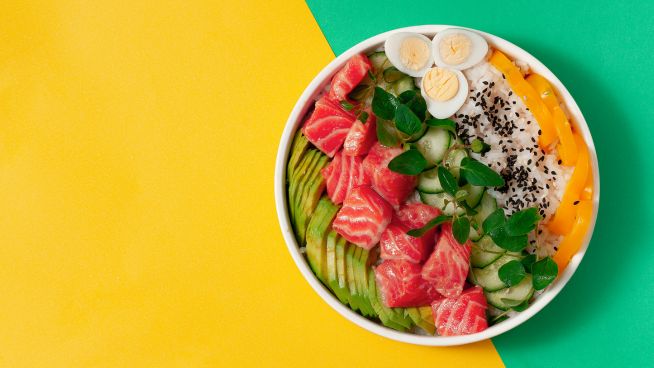MYTH OR FACT: You Burn More Calories Than You Consume When You Eat Celery
Burning calories is usually associated with heart-pounding work. Cardio, weight training, aerobics—if you want to shed pounds, you’ve got to get your body moving. But wouldn’t it be great if you could burn calories while lying on the couch? Or better yet, wouldn’t it be awesome if you could burn calories while eating food?
It sounds counterintuitive, but the internet is full of tales of magical “negative calorie” foods—foods that, when you eat and digest them, you burn more calories than they actually contain. Celery is the food most commonly used as an example of negative calories, but a simple Google search reveals a wide range of others. Is there science behind this theory, or are negative calorie foods simply too good to be true? STACK investigates.
The Power of Produce
Negative calorie foods are almost exclusively associated with fruits and vegetables. An image search on the topic reveals an endless stream of lists and charts proclaiming that many items of produce burn more calories than they deliver when consumed. Cantaloupe, celery, green beans, zucchini, broccoli, garlic, tomato, watermelon, peach and lemon are frequent inclusions.
RELATED: How Many Calories Do I Need in a Day?
One reason why it might not sound far-fetched for these foods to contain negative calories is because they’re low in calories to begin with. Most vegetables contain less than 25 calories per serving. Fruits are typically higher in sugar than veggies (and thus higher in calories), but most of them still come in under 70 or 80 calories per serving. A big reason for the low calorie count of fruits and veggies—aside from the fact they have no added ingredients—is that they’re mostly water. Celery, for example, is 95 percent water. Drinking water does burn calories—especially cold water—so maybe eating something that’s almost all water can burn calories too.
If someone suggested that a processed food high in sugar and fat, like Oreos, contained negative calories, they’d be written off as delusional. But with natural produce, the theory sounds more plausible, especially since the process of eating food has been proven to burn calories.
First, placing food to your mouth and chewing it are movements that require energy in the form of calories to perform. Second, your internal digestive processes triggered when you eat also require calories. When you factor it all in, the idea of a negative calorie food doesn’t sound too wacky.
Science Says
Although negative calorie foods are theoretically possible, no scientific evidence supports their existence. According to the Mayo Clinic, “there are no reputable scientific studies to prove that certain foods have this effect.”
Chewing and digesting food really does burn calories—so in theory a negative calorie food could exist—but the idea doesn’t hold true when put into real world practice.
The University of Michigan Nutrition Counseling Center addressed this issue in their July 2013 “Food Myths” packet. “Suggesting that celery has negative calories would mean that you could eat all the celery you wanted and never gain any weight, and actually lose weight, but that is not true. If someone ate enough celery (over their calorie limit), it is possible to gain weight.”
Chewing food does burn calories—a Mayo Clinic study found the act of chewing gum burned about 11 calories an hour—as does digesting food. Calories can come from three sources—protein, carbohydrates and fat. According to Precision Nutrition, protein takes the most energy to digest; 20 to 30% of the total calories in protein are burned during digestion. So if you ate 100 calories of protein, between 20 and 30 of them would be burned during digestion. Carbs take the second most energy. Roughly 5 to 10% of the total calories in carbohydrates are burned during digestion. Fat takes the least amount of energy to digest; between 0 and 3% of the total calories in fat are burned during digestion.
But the calorie burns we’re talking about are so small that it’s nearly impossible for a food to end up containing negative calories. Theoretically, negative-calorie foods can exist—but the food would have to be very low in calories, chewed for a long time and have a nutritional makeup that required a high percentage of calories for digestion. At 18 calories per serving, celery doesn’t fit the bill.
RELATED: Eat More Fruits and Veggies, Live (Almost) Forever
The Verdict: Myth
Fruits and vegetables are phenomenal foods, which have been proven to have a positive effect on everything from body composition to mood to overall risk of chronic disease. Just because they don’t result in “negative calories” is no reason to stop including them in your diet.
Negative calorie foods are often trumpeted by radical weight loss programs as a magic shortcut to weight loss, but that’s just hype. Even if a negative calorie food did exist, the total amount of calories it burned would be so tiny that it would have no realistic application. Eat fruits and veggies because they’re packed with valuable nutrients—not because you think they contain negative calories.
RECOMMENDED FOR YOU
MOST POPULAR
MYTH OR FACT: You Burn More Calories Than You Consume When You Eat Celery
Burning calories is usually associated with heart-pounding work. Cardio, weight training, aerobics—if you want to shed pounds, you’ve got to get your body moving. But wouldn’t it be great if you could burn calories while lying on the couch? Or better yet, wouldn’t it be awesome if you could burn calories while eating food?
It sounds counterintuitive, but the internet is full of tales of magical “negative calorie” foods—foods that, when you eat and digest them, you burn more calories than they actually contain. Celery is the food most commonly used as an example of negative calories, but a simple Google search reveals a wide range of others. Is there science behind this theory, or are negative calorie foods simply too good to be true? STACK investigates.
The Power of Produce
Negative calorie foods are almost exclusively associated with fruits and vegetables. An image search on the topic reveals an endless stream of lists and charts proclaiming that many items of produce burn more calories than they deliver when consumed. Cantaloupe, celery, green beans, zucchini, broccoli, garlic, tomato, watermelon, peach and lemon are frequent inclusions.
RELATED: How Many Calories Do I Need in a Day?
One reason why it might not sound far-fetched for these foods to contain negative calories is because they’re low in calories to begin with. Most vegetables contain less than 25 calories per serving. Fruits are typically higher in sugar than veggies (and thus higher in calories), but most of them still come in under 70 or 80 calories per serving. A big reason for the low calorie count of fruits and veggies—aside from the fact they have no added ingredients—is that they’re mostly water. Celery, for example, is 95 percent water. Drinking water does burn calories—especially cold water—so maybe eating something that’s almost all water can burn calories too.
If someone suggested that a processed food high in sugar and fat, like Oreos, contained negative calories, they’d be written off as delusional. But with natural produce, the theory sounds more plausible, especially since the process of eating food has been proven to burn calories.
First, placing food to your mouth and chewing it are movements that require energy in the form of calories to perform. Second, your internal digestive processes triggered when you eat also require calories. When you factor it all in, the idea of a negative calorie food doesn’t sound too wacky.
Science Says
Although negative calorie foods are theoretically possible, no scientific evidence supports their existence. According to the Mayo Clinic, “there are no reputable scientific studies to prove that certain foods have this effect.”
Chewing and digesting food really does burn calories—so in theory a negative calorie food could exist—but the idea doesn’t hold true when put into real world practice.
The University of Michigan Nutrition Counseling Center addressed this issue in their July 2013 “Food Myths” packet. “Suggesting that celery has negative calories would mean that you could eat all the celery you wanted and never gain any weight, and actually lose weight, but that is not true. If someone ate enough celery (over their calorie limit), it is possible to gain weight.”
Chewing food does burn calories—a Mayo Clinic study found the act of chewing gum burned about 11 calories an hour—as does digesting food. Calories can come from three sources—protein, carbohydrates and fat. According to Precision Nutrition, protein takes the most energy to digest; 20 to 30% of the total calories in protein are burned during digestion. So if you ate 100 calories of protein, between 20 and 30 of them would be burned during digestion. Carbs take the second most energy. Roughly 5 to 10% of the total calories in carbohydrates are burned during digestion. Fat takes the least amount of energy to digest; between 0 and 3% of the total calories in fat are burned during digestion.
But the calorie burns we’re talking about are so small that it’s nearly impossible for a food to end up containing negative calories. Theoretically, negative-calorie foods can exist—but the food would have to be very low in calories, chewed for a long time and have a nutritional makeup that required a high percentage of calories for digestion. At 18 calories per serving, celery doesn’t fit the bill.
RELATED: Eat More Fruits and Veggies, Live (Almost) Forever
The Verdict: Myth
Fruits and vegetables are phenomenal foods, which have been proven to have a positive effect on everything from body composition to mood to overall risk of chronic disease. Just because they don’t result in “negative calories” is no reason to stop including them in your diet.
Negative calorie foods are often trumpeted by radical weight loss programs as a magic shortcut to weight loss, but that’s just hype. Even if a negative calorie food did exist, the total amount of calories it burned would be so tiny that it would have no realistic application. Eat fruits and veggies because they’re packed with valuable nutrients—not because you think they contain negative calories.













